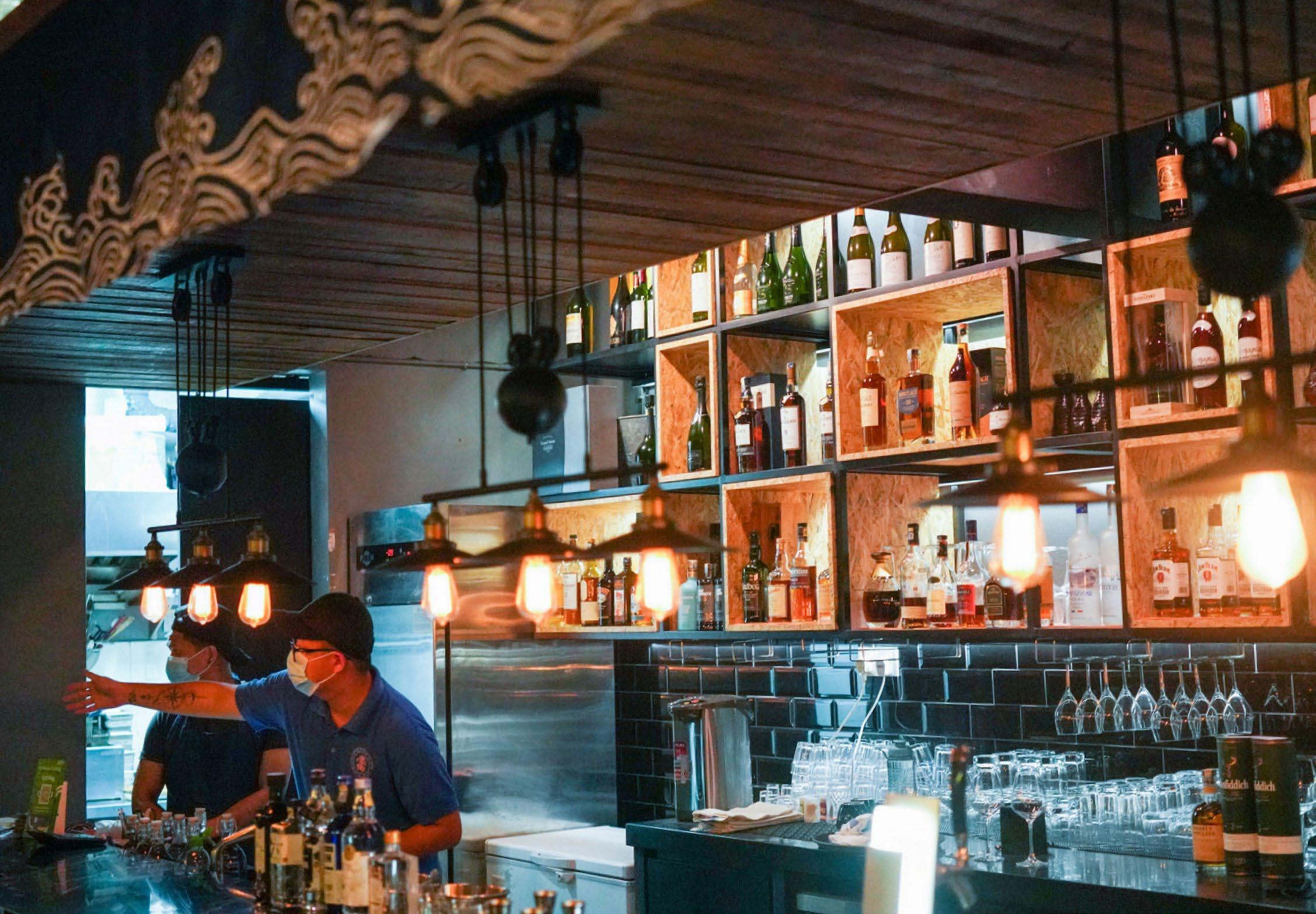
15 minute read
Quench
by Spafax
Meet a Mizakaya Self-described as an M-Izayaka (Malaysian Modern Izakaya),
Collins Sake & Wine Bar
Advertisement
brings a sleek update to the classic Japanese bar experience. Its name alone points to its top tippling temptation: The bar offers unique takes on the Tom Collins highball cocktail, made with gin as well as rum or tequila. Gin-based options include the White Grape Highball. Rum is reserved for the Spiced Asam Boi Highball and tequila for the Pink Grapefruit Highball. Grab a bite too — try Collins’ spin on mazesoba. Here, the noodle dish is served with minced meat, a raw egg yolk, roasted pork belly and crunchy lard bits.

Beastly Brews With more than 99 bottles of beer on the wall, the friendly Monster and Beer in the suburb of Petaling Jaya promises a fun evening of exploring the world of craft beers. Whisk yourself away to Hong Kong, the origin of two fruit-infused beer temptations — a Longan Pale Ale by Mak’s Brewery (made with dried longans) and Gwei-lo’s Citrus Crusher that’s exuberantly refreshing. Pair these with onion-cream baked oysters, gyoza or ramen. The cool illustrations that decorate this joint have already made it a magnet for beer-loving hipsters.


facebook.com/MonsterAndBeer




New City, Old World Charm
KOTA BHARU EXUDES THE ENERGY OF A MID-SIZED CITY AND FRIENDLY VIBES OF A SMALL-TOWN. IT IS ALSO THE PERFECT PITSTOP BETWEEN ITS NEIGHBOURING ISLANDS AND THAILAND.

7am Start the day with a kampung-style breakfast at Pok Loh Milo Tunggeng. Locals flock to this unassuming warung (small family-run stall) for its speciality Milo drink (topped with a generous amount of powdered Milo) and a wide range of pre-packed breakfast items at reasonable prices. Choose from breakfast staples such as nasi lemak, fried noodles, fried bee hoon and local delicacies like nasi kerabu (herb rice), roti titab, satay and nasi impit (compressed rice). This humble stall is the best place to sample a local Malay breakfast. Alternatively, head over to Kuan Heong Huan for a simple Hainanese-style breakfast. The menu here is straightforward: aromatic Hainanesestyle coffee, kaya toast and half-boiled eggs.
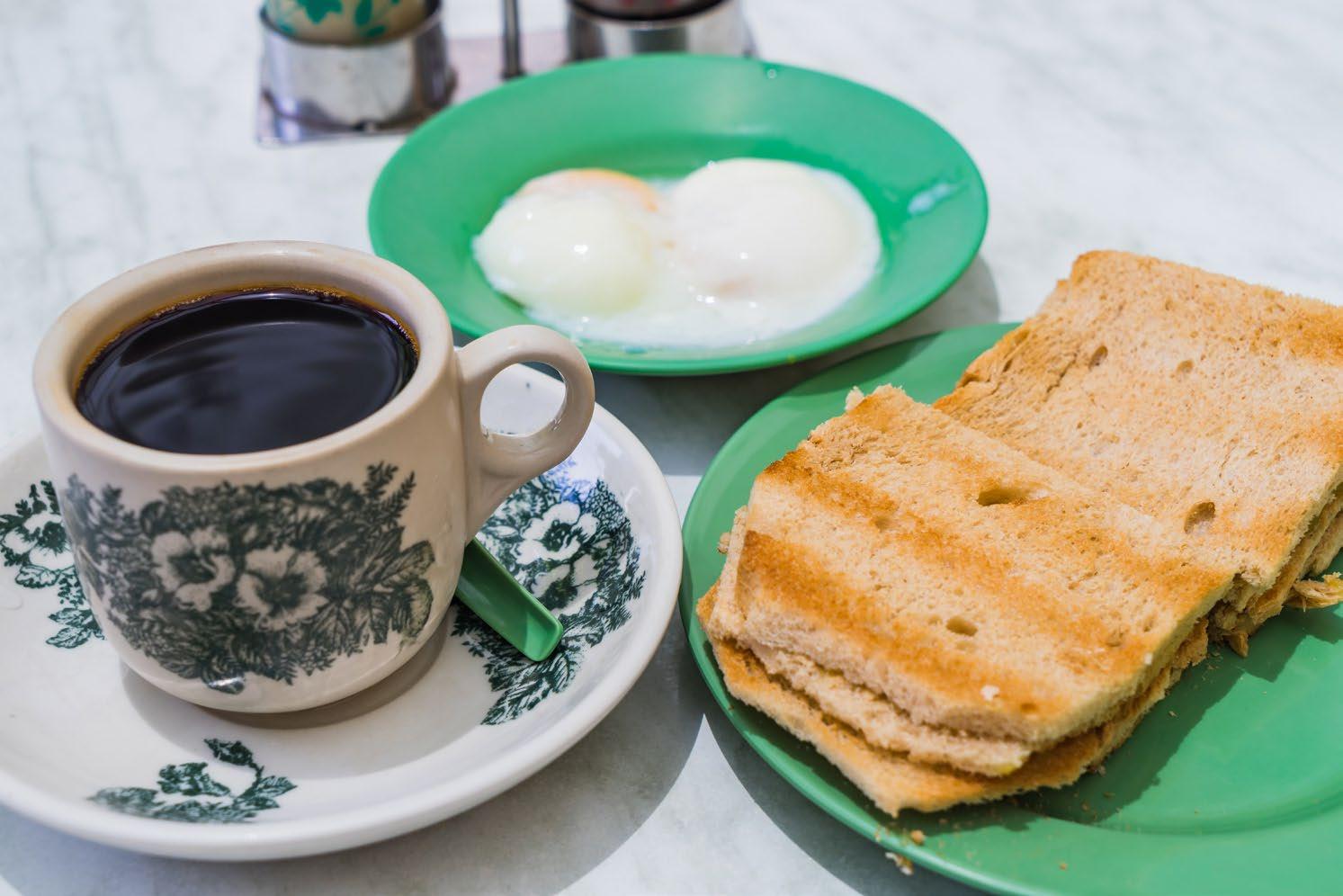
Wat Phothivihan
8am Due to its close geographical proximity to Thailand, there are several impressive Buddhist temples that are worth a visit. Head out to Wat Machimmaram, a 30-minute drive away (by taxi or Grab, if you’re not driving) from Kota Bharu town centre, where you’ll find the largest sitting Buddha statue in Malaysia — a 30-metre-tall statue, coated in tiny shiny mosaic tiles. Another temple that should be on your list is Wat Phothivihan, which is famous for its reclining (or sleeping) Buddha statue. At 40 metres long, the statue is the largest in Malaysia. If time permits, Wat MaiSuwanKiri is also worth a visit. Part of this richly decorated temple is built in the shape of a dragon boat surrounded by a moat.

Pasar Siti Khadijah
11am For a taste of local life, you should visit Pasar Siti Khadijah. This is one of the landmarks of Kota Bharu, named after Prophet Muhammad’s first wife who was a savvy businesswoman. Locals shop for their everyday groceries like poultry, fish, vegetables and fruits on the ground floor. On the upper floors, you will find a wide range of goods for sale, from spices, local delicacies and household goods to clothing like batik shirts, kain pelikat (sarong) and tudung (head scarf). 12pm Lunch at Lieney Nasi Kerabu Tumis is a must. You simply cannot leave Kelantan without eating this iconic dish of blue pea flower-tinged rice, which is often served with chicken, beef or fish, various herbs and coconut flakes. The Kelantan version is usually eaten with budu, a fermented fish sauce. As it is with most Kelantanese dishes, they tend to be sweet so order the solok lada (green chili stuffed with fish paste and simmered in coconut milk), which will add a spicy contrast to the sweetness.
Nasi Ulam Cikgu, located in Kampung Kraftangan, is another restaurant that’s highly recommended for anyone who wants to savour the true tastes of Kelantanese cuisine. Nasi ulam consists of rice mixed with shredded herbs, and served with various side dishes. The huge range of options here might seem overwhelming, but let the owner recommend the items as well as show you how to mix budu to get the most flavour out of it. Our favourites include fried fish, asam pedas (sour-spicy fish stew) and of course, their ulam (herb salad).
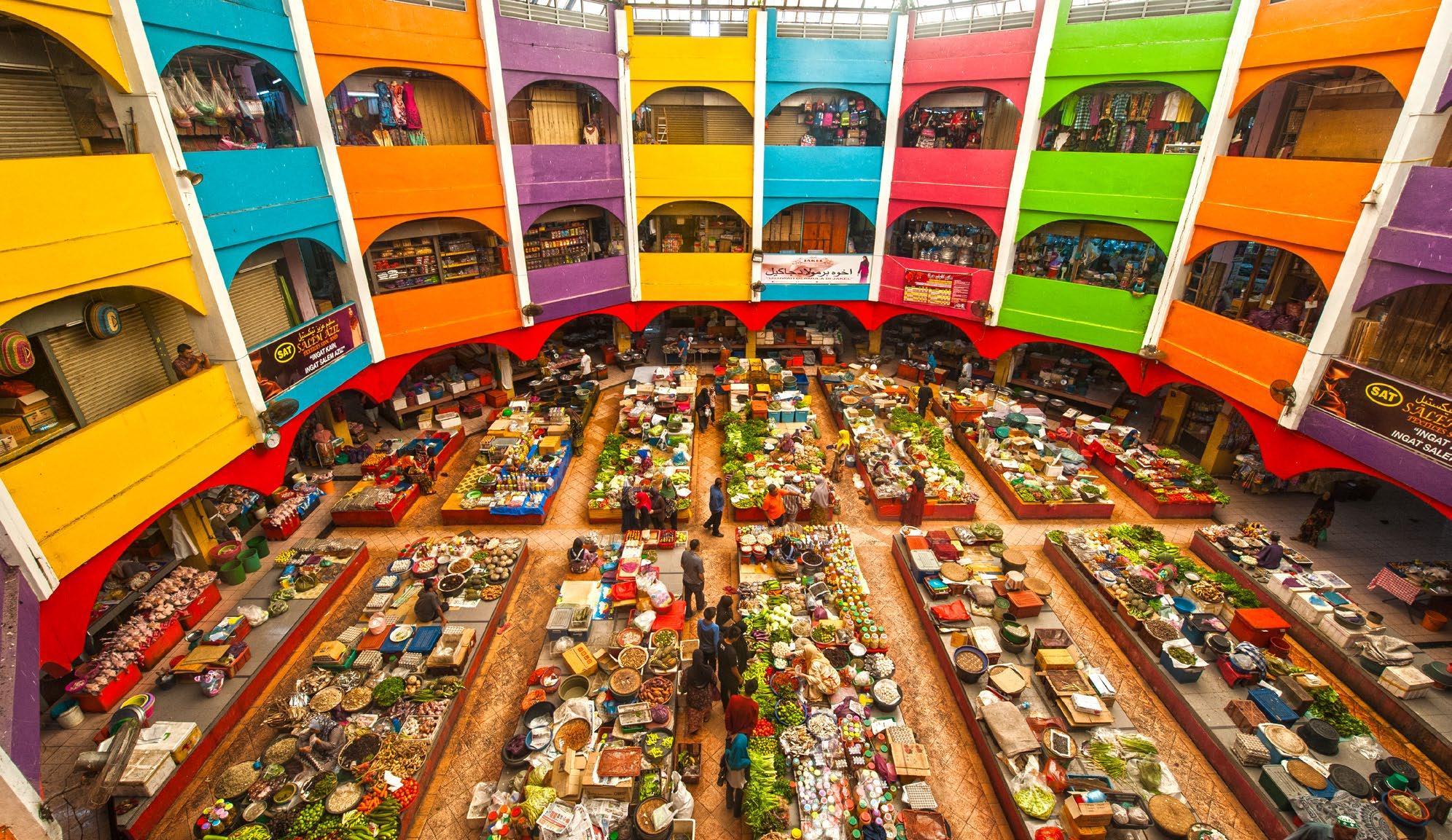

1pm Lunching at Nasi Ulam Cikgu just about seals the deal for some retail therapy — shop for local handicrafts here at Kampung Kraftanga or Handicrafts Village. Admission to the village is free but there is a small fee if you visit the Craft Museum, where you can learn more about local arts and crafts like woodcarving, batik-making, puppet-making and brass ware. 2pm Just a short walk away is Istana Jahar. Built in 1887, the former palace was converted into the Kelantan Traditional Royal Ceremonies Museum in 1981. This beautiful wooden structure now houses collections of royal costumes, royal regalia, jewellery and silverware, as well as information about royal rituals. Details of the Kelantan royal genealogy are also displayed via family tree charts and photographs.
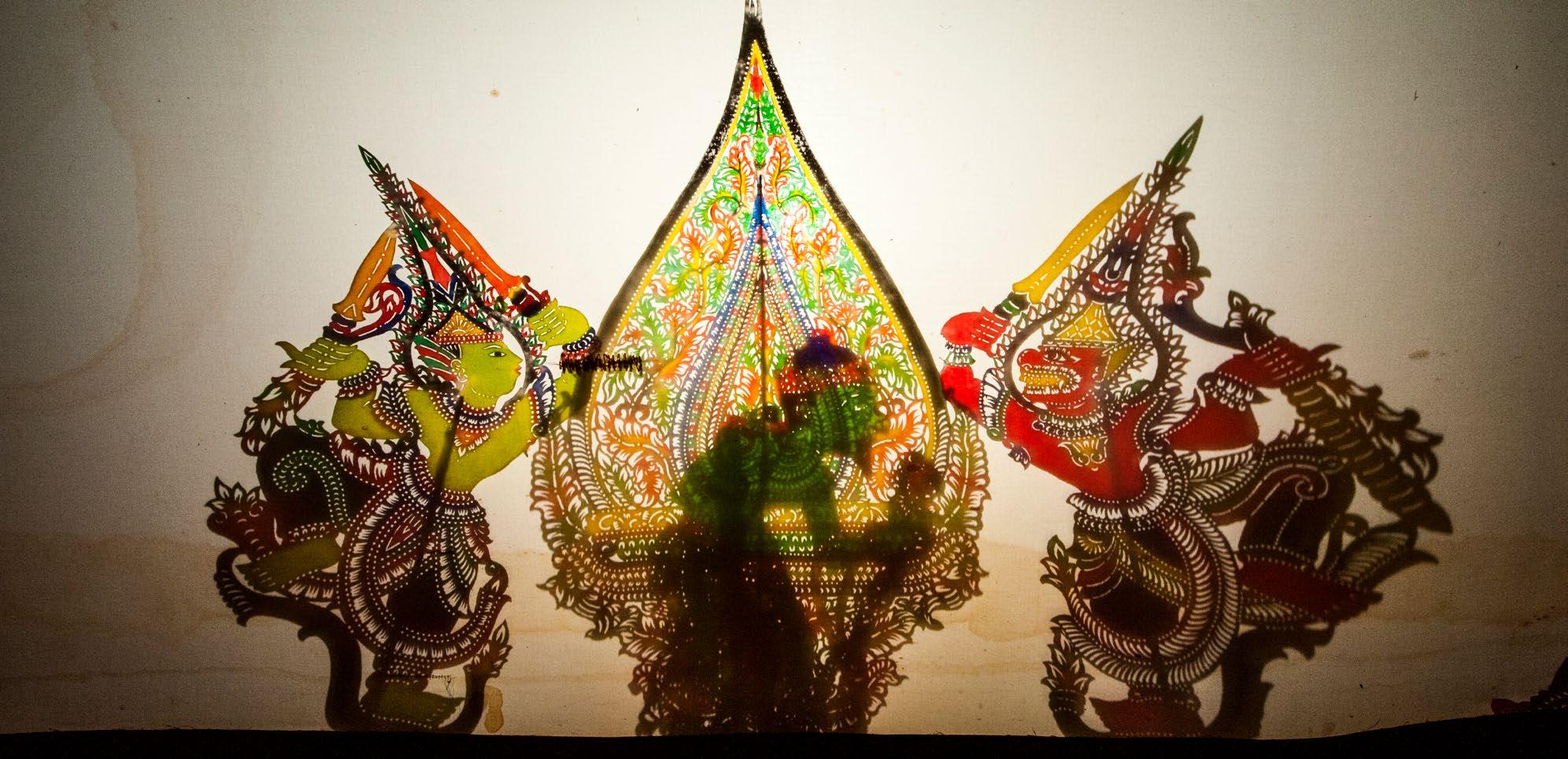
Istana Jahar
3.30pm Three times a week, the Gelanggang Seni or Cultural Centre showcases different traditional activities such as gasing (top spinning), silat (martial arts), and more. (Check the state’s tourist office for official timings). One show you should not miss is wayang kulit — a traditional shadow play performance unique to Kelantan. The theatre performance usually involves a Tok Dalang, or master puppeteer, who narrates a story with colourful and intricately designed puppets behind a screen lit up by oil lamps. You can catch a wayang kulit show at the Kelantan Museum every Saturday from now till 31 October. (Check for show times and details).
Wayang Kulit

5.30pm This is a coastal town after all so head to the beach — to Pantai Cahaya Bulan, which is closer to town, or the less-touristy Pantai Mek Mas. The latter’s biggest draw is the man-made sand dune where kids can try out sandboarding. Or just take some time to chill and soak in the sunset view from the top of the dune. 7pm It might be a little challenging to find a restaurant for dinner in Kota Bharu as most eateries are only open for breakfast and lunch. Four Seasons Restaurant is your best bet. Its extensive halal Chinese menu offers generously portioned dishes that taste great. Kota Bharu is a staunchly Muslim town, so if you need to chug back a beer or two, Restoran Golden City — a pub/sports bar of sorts with a limited Western food menu — might be your only choice.

Pantai Cahaya Bulan
Four Seasons Restaurant

Kelantanese Delicacies

Nasi Tumpang Also referred to as nasitupe by the locals, this breakfast dish consists of rice, an omelette, beef or fish floss, shrimp or fish curry, sweet sambal gravy and cucumbers — all neatly wrapped into a cone shape with banana leaf.
Roti Titab This unusual pairing of sweet and savoury is an iconic breakfast set made famous by the folks from Koptiam Kita. Roti titab marries kaya with a half-boiled egg on a thick piece of toast.

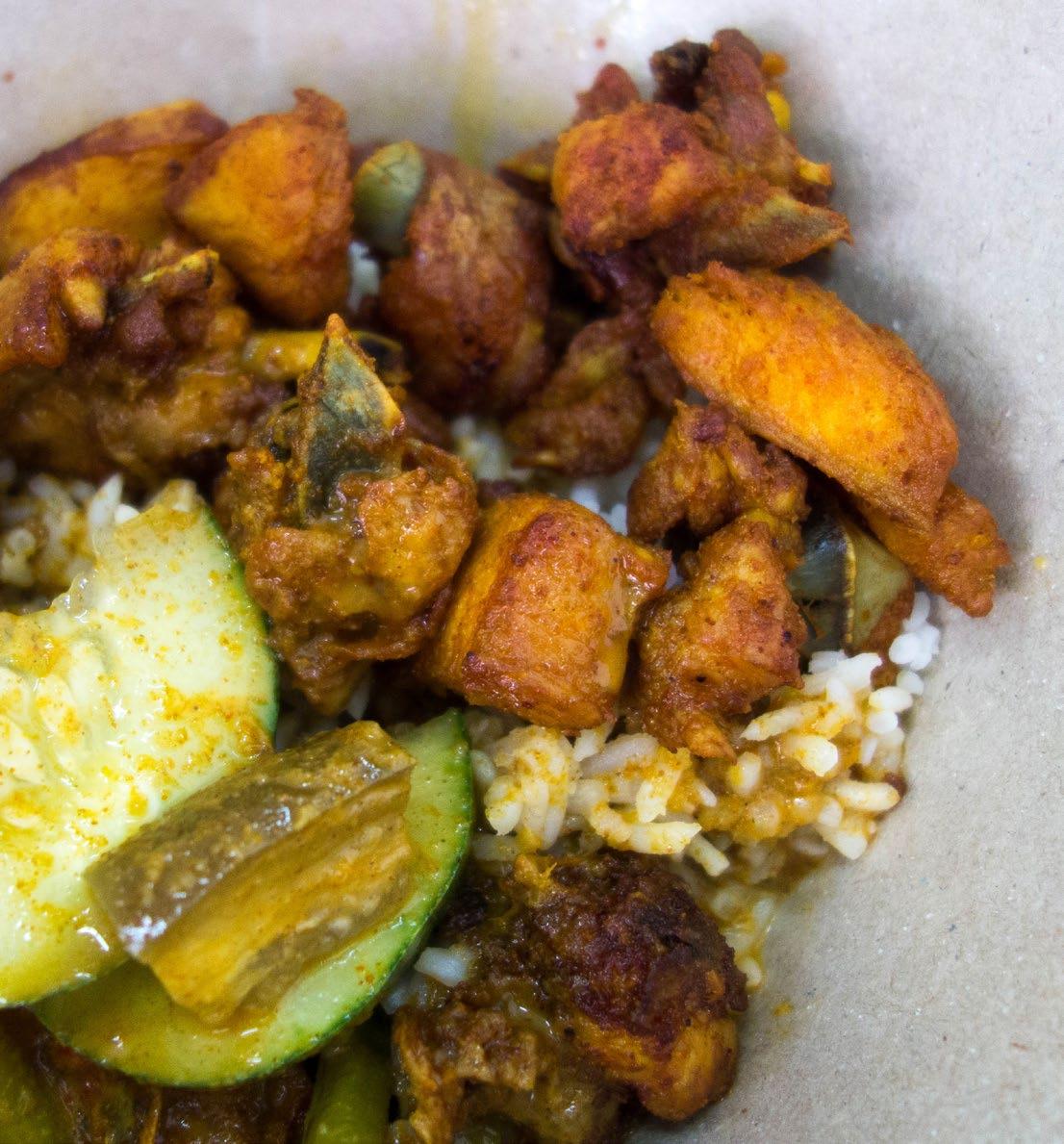
Nasi Kak Wok Created by the late Kak Wok, this Kelantanese dish is served with fried chicken — cut into small pieces — and laced with curry sauce. The secret to this classic dish is the seasoning used for the aromatic chicken, which has been passed down through generations. •

Text Alexandra Wong Photos Law Soo Phye
Play Child’s
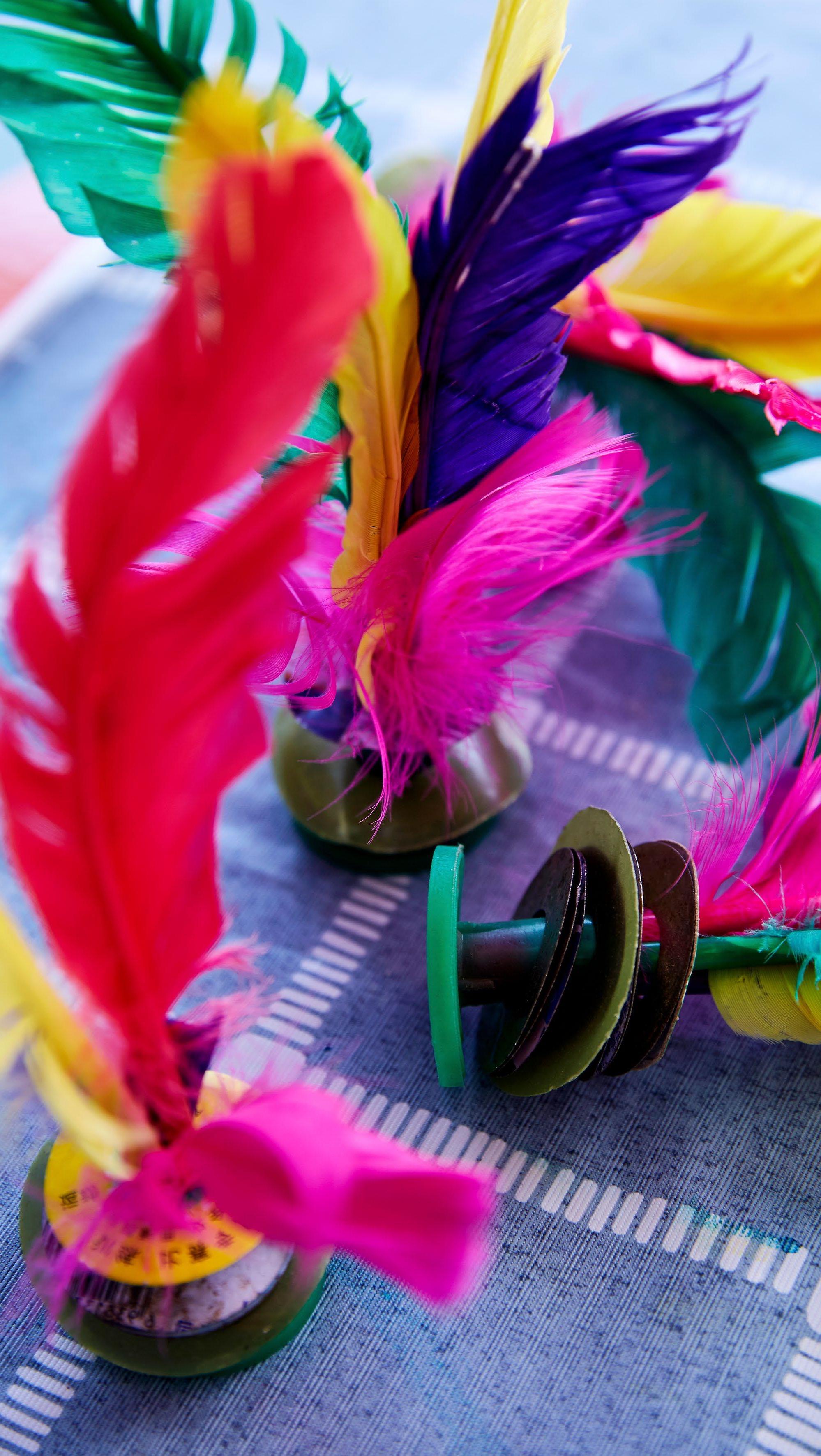
GET REACQUAINTED WITH TRADITIONAL CHILDHOOD GAMES THAT ALL MALAYSIANS WOULD RECOGNISE — BECAUSE HAVING FUN NEVER GETS OLD.
Ah, the good old days. We’ve all heard tales from our parents and grandparents about their idyllic kampong lives, and the games they played during their childhood when there was no wi-fi, and electronic gadgets were rare. Armed with usually nothing more than common objects found around the house, resourcefulness and an active imagination, many Malaysians grew up playing various traditional games.
Here are six much-loved native games that continue to delight Malaysian children and adults alike.
Gasing If there’s one game that has staying power, it is gasing (refers to top spinning and also the actual top). Originally introduced by traders from the Middle East around 450AD, gasing was subsequently picked up as a postrice harvest men’s game before evolving into a competitive sport that still takes place in Malaysia.
There are two types of gasing matches. In the ‘spinning match’ (gasing uri), the aim is to get the top to spin for as long as possible. (The current record of a top’s spin duration, in a spinning match, stands at approximately two hours). In the ‘striking match’ (gasing pangkah), each contestant tries to throw the balance off their opponent’s tops.


Malaysia’s tops — there over 100 types — are rather unique in design and shape, and most of them have fascinating references or characteristics. For example, gasing jantung is derived from the shape of the banana heart (a popular ingredient in Malay cuisine). The dualfaced gasing talam dua muka refers to a famous Malay proverb about human treachery, while the shape of a gasing lang laut draws inspiration from the sea.
Traditionally made from wood or hard fruit, these days you can find plastic tops and even those that can be set in motion without a string or rope, such as the Beyblade top, a line of spinning top and battle top toys inspired by Japanese manga.
Good to know: Second-generation gasing player Rimy Azizi, who set a record (in the Malaysian Book of Records) for playing for 24 hours in 2012, is championing the game’s revival by teaching top-making courses and training gasing enthusiasts at facebook.com/rimy.gasing
Congkak There are many legends surrounding this mancala game, the generic moniker for two-player games typically played with small stones, beans or seeds on a board. As the congkak board is shaped like a boat, some say the game was invented by a fisherman who was unable to go to sea during the rainy season.
Players sit on the opposite sides of the board with two rows of holes, and they must fill each hole with tokens; these can be shells, pebbles, marbles or rubber seeds. The aim of the game is to get rid of all of your tokens by moving them to your opponent’s ‘house’ (which is on one end of the board; yours is on the other end) while leaving at least one of your tokens in each of the holes on your side. The player with the most tokens in his ‘house’ or the first to empty his row of holes, wins.
In cases where both players are

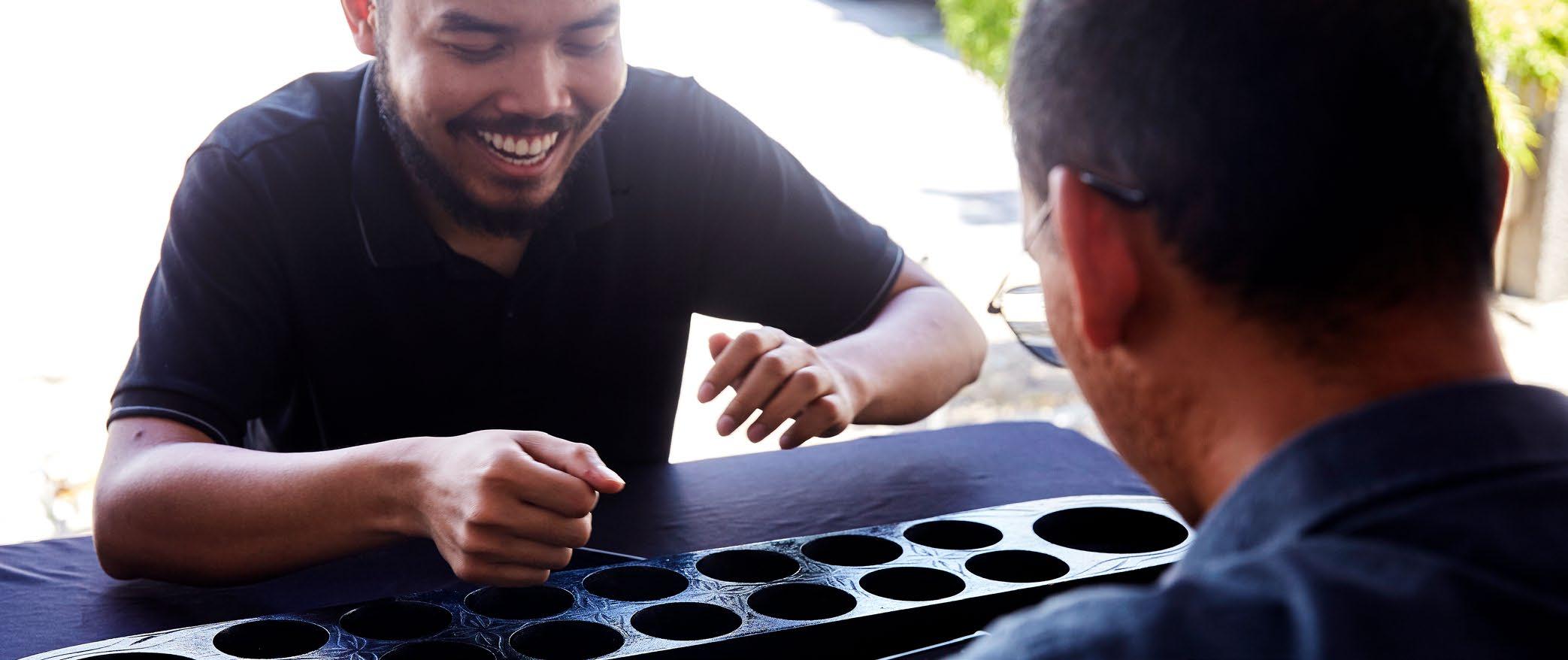
skilful, the game can take hours to finish. It’s a game that also helps children learn to count. Incidentally, the word congkak originates from an old Malay word that means mental calculation.
Classical congkak boards are generally made of mahogany or teak and sometimes sport majestic carvings of snakes or birds at either ends, though these days you can get lightweight, durable and ecofriendly ones from online shopping platforms or sites.
Fun fact: A congkak board is embossed on the reverse side of the second series of the Malaysian Ringgit ten-cent coin.

Sepak Bulu Ayam This game is the ultimate test of quickness, eye-leg coordination and control, and when played in a team, it fosters team spirit. It is played in open areas and the only item required is a soft shuttlecock made from five or more chicken feathers (bulu ayam) attached to a rubber or plastic base.
There are two ways of playing the game, but they share a common goal: keep the shuttlecock airborne as long as you can by using any part of your body except your hands. In the ‘circle kick’, a team of players form a circle and pass the shuttlecock around. Points are scored for each pass and the team with the highest points wins. In the ‘duel kick’, the game is played like sepak takraw (or kick volleyball).
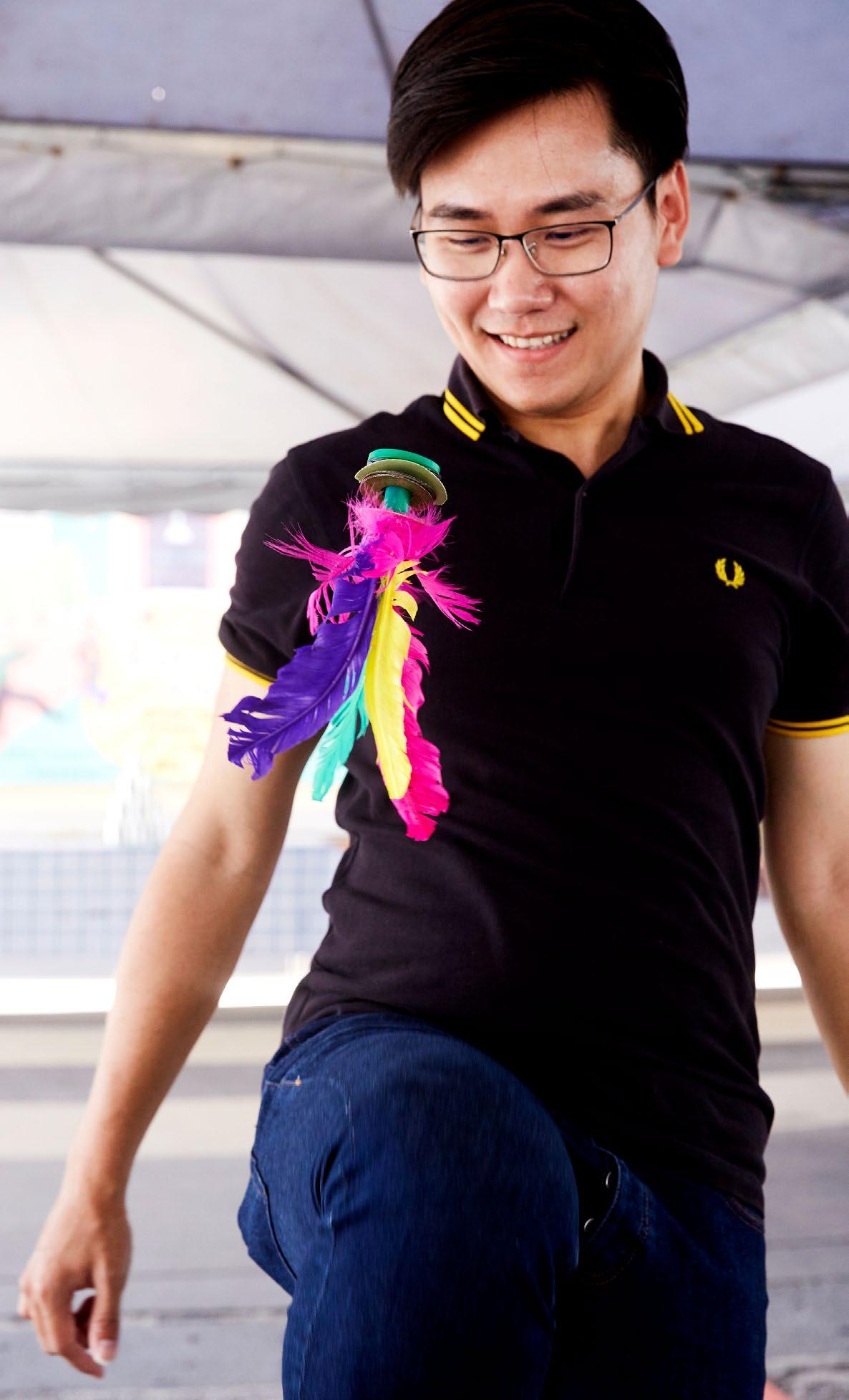
The earliest reference to this game is in China in the 5th Century BC, where it was known as ti jian zu (literally, kick the shuttlecock) — it was used to train military men to focus and hone their coordination. In Henan province, Shaolin monks included the activity in their training routine to build strength and agility.
Fun fact: The game entered the SEA Games twice as a competitive sport — once in 2003, Vientiane, Laos and the second time in Vietnam.
Diabolo A game that dates back to the Ming Dynasty, diabolo was introduced in Malaysia as recently as the 1990s. The late Feng Ya Ping, a teacher from Perak, learned the game during his undergraduate studies in Taiwan, and when he returned to Malaysia, he started promoting it around the country. It has since found its way into the cocurriculum in many Chinese vernacular schools.
Think of diabolo as hand acrobatics. The player manoeuvres an hourglass-shaped object — the diabolo — on a string connected to two hand sticks. The idea is to get the diabolo to balance and rotate while moving the hand sticks up and down. Thanks to its theatricality, diabolo is employed frequently in performances, that often involve acrobatics.
The fun really begins as you level up. You can toss the diabolo up and catch it on the strings, manipulate the strings into patterns while keeping it spinning, or spin multiple diabolos on a single string — some experts can balance up to 20 on a single string!

Good to know: My Diabolo Academy www. mydiabolo.com, which has performed nationwide, offers professional coaching classes.


Batu Seremban (aka Five Stones)
This game dates way back in time — knuckle, wrist and ankle bones of grass-grazing animals have been found in prehistoric caves in Ukraine, while paintings of the game are depicted on jars from ancient Greece. In Malaysia, batu seremban is played using small smooth stones, rubber or tamarind seeds. Some are colourful small pouches, sewn and filled with sand, dried beans or rice grains.
In this game, a minimum of two players sit on a flat surface and play in turns with five small objects or buah (fruit). In its simplest mode of play, the first player will throw one of the buah in the air, and attempt to pick up one of the remaining four buah on the ground and catch the airborne one before it hits the ground. Now armed with two buah in his hand, the player continues this process and until all five end up in the player’s hand — to win the game. Starting with just five, players can level up to seven or even nine buah.
Good to know: Sign up for a batu seremban-making workshop at www.instagram.com/
southeastasiaheritage


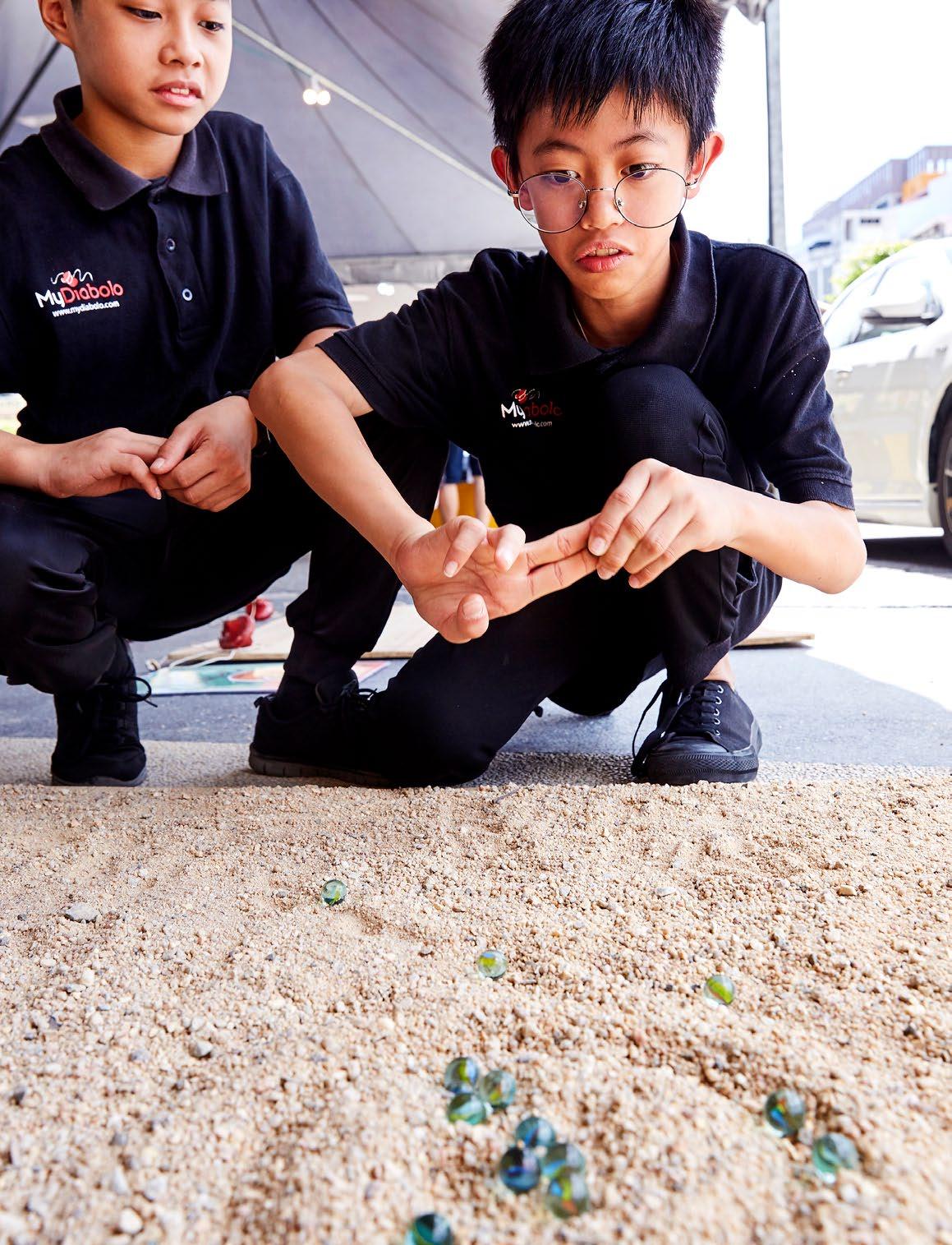
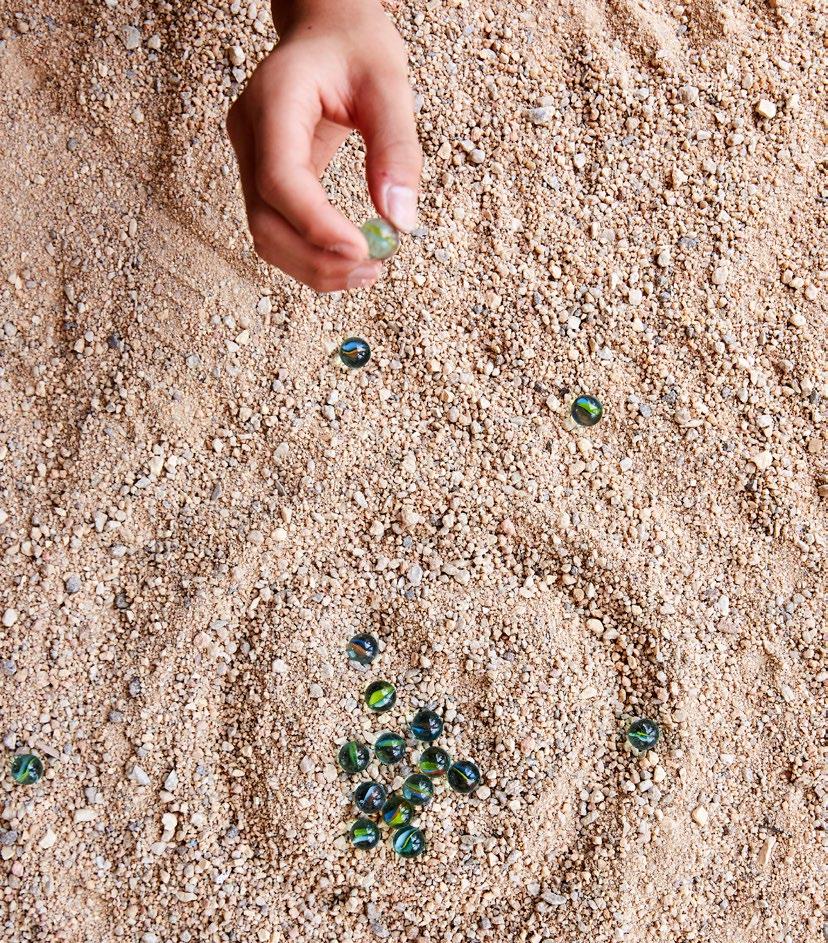

Guli (Marbles) In this old school game of elimination, colourful marbles act as ammunition in a circular battlefield drawn on flat ground (usually sandy). The marbles are randomly scattered within the circle and players then engage in a game of mini billiards, flicking the marbles with their fingers acting as pool cues, in attempts to knock their opponents’ marbles out of the circle. The player with the most marbles left within the circle wins.
The game of marbles actually got its name from an 18th century practice of making children's toys from chips of marble or stone. However, marbles have been made from different types of materials, such as baked clay (called marrididdles), glass, steel, plastic, onyx, agate and even alabaster. The more common ones these days are ‘cat's eye’ marbles, which were originally made in Japan. Cat’s eye marbles are made of clear glass injected with swirling coloured glass to give the illusion of… a cat’s eye.
Fun fact: Check out the sport of marble racing on Jelle’s Marble Runs, a YouTube channel run by Jelle and Dion Bakker based on the concept of MarbleLympics, where marbles take the place of athletes. •










